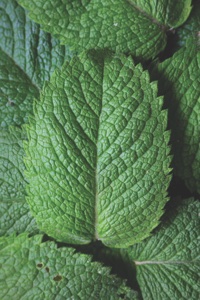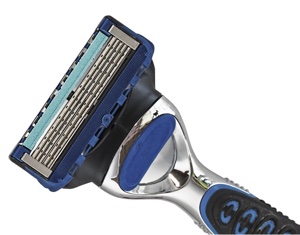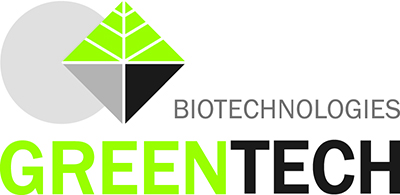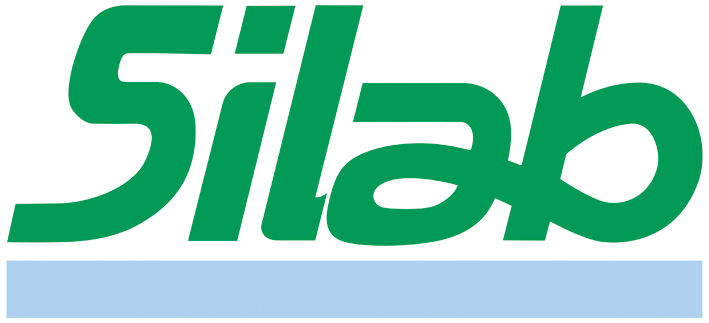The most obvious difference between male and female facial skin is hair growth. As a cosmetic formulator the author’s main concern with facial hair has been its removal and treatment of the owners’ skin. However, it also has social implications. According to an article in Social Science Quarterly[1], facial hair makes men appear overly masculine, suggesting strong support for use of violence and little support for feminist views. The context was for political candidature and it argues that facial hair makes candidates less attractive for women and feminists.
Even if not standing as a political candidate, whether to be clean-shaven or bearded is a personal choice and often dependent on what the man considers will make him more attractive. An article in the Journal of Evolutionary Biology discusses how facial masculinity and beardedness interact to determine women’s ratings of men’s facial attractiveness[2]. Using Photoshop, male photos were presented as clean-shaven, light stubble, heavy stubble and full bearded, and their attractiveness commented on by a panel of 8,699 females. It was found that faces with light and heavy stubble were more attractive than either full beards or clean-shaven faces. Paradoxically, clean-shaven faces were judged as more attractive for short term relationships, whereas beards were judged as more attractive for long term ones.
Whether standing for office or wishing to attract a partner, shaving is the most common cosmetic practice in men. The male facial skin is heterogeneous in morphology and roughness, and male skin has a tendency to heal slower and to develop hyper-inflammatory pigmentation. In addition, many males exhibit sensitive skin, with the face most often affected. Activation by shaving can result in shaving-induced skin irritation, and techniques commonly employed to avoid shaving-induced skin irritation include pre- and post-shave skin treatments[3].
A close shave
Beard hairs have more cuticle layers than scalp hairs and, as a consequence, their diameter is twice that of scalp hairs and more force is needed to cut them[4]. Beard hair, when dry, shows a high stiffness and has been claimed to be equivalent to a copper wire of similar diameter, with respect to the forces needed to cut it. Hydration can reduce the stiffness of beard hair by about 20% within the first minute of water contact and after four minutes, the cutting force is reduced by 40% but does not significantly decrease further with longer hydration. This would indicate that a good shaving product should impart a high degree of moisture to the beard hair, as well as providing razor glide.
Beard hair, when dry, shows a high stiffness and has been claimed to be equivalent to a copper wire of similar diameter, with respect to the forces needed to cut it."
DUB 810C from Stearinerie Dubois is marketed as a replacement for isohexadecane and silicones to improve razor glide and skin’s moisture levels. It is the ester coco caprylate/caprate, and its non-oily nature and high degree of spreadability make it especially suitable for males who suffer from over-production of sebum.
Structure CEL 4400 E [INCI: Hydroxyethyl ethylcellulose] and Structure CEL 500 HM [INCI: C12-16 Alkyl PEG-2 hydroxypropyl hydroxyethyl ethylcellulose] are rheology modifiers from AkzoNobel that, when added at only 0.1% to a shaving cream, create a rich foam and impart lubricity to help the razor glide smoothly and evenly on the skin for a close and comfortable shave. AkzoNobel also suggests adding Hydrovance [INCI: Hydroxyethyl urea] as an effective moisturising agent to shaving products. These ideas with formulations appear in a presentation from AkzoNobel called Male Essentials, which claims meeting the needs of today’s man means providing grooming options that are multifunctional, effective and convenient to use.
Cornelius produces regular cosmetic trend presentations and, in September 2016, it released Men’s Grooming 2016, claiming that 31% of men have seven or more types of grooming products with 53% of men buying across one or two brands. It also suggests that men look for multifunctional products with light textures; that facial products should offer moisturisation, energising and anti-wrinkle properties; that men are interested in body slimming, firming and toning products; and that anti-pollution (with its link to faster ageing) is also of interest. The presentation discusses these and other aspects of male grooming, and suggests materials and products that may meet male requirements.
Healing for him
The number of men claiming to have sensitive skin is substantial[5]. In self-assessment surveys, about 40% of men rate themselves to have sensitive skin and one third of men report having experienced a skin reaction to a personal care product in the past. Important factors that influence the incidence of perceived skin sensitivity include environmental factors and increased use of cosmetic products. Additionally, male skin has been reported to exhibit slower wound-healing and lower re-epithelialisation capacity compared with female skin. This suggests that pre- and post-shaving products would benefit from the inclusion of anti-inflammatory and wound-healing ingredients.
Ajidew ZN-100 [INCI: Zinc PCA] from Ajinomoto helps heal nicks and cuts from daily shaving, while moisturising the skin and keeping it clear from bacteria. It is also claimed to inhibit UV-induced AP-1 production, which retards collagenase activity, thus helping to preserve the skin’s collagen to maintain firmness and elasticity. TRIglyphix Sense [INCI: Hordeum vulgare seed extract] from TRI-K is a botanically-based active designed to quell the discomfort and redness associated with skin irritation. It is shown to significantly reduce post-shave redness, burning and stinging, and can help repair injured skin.
Inka Drago from 3QP is described as a natural ingredient from the Amazon rainforest. Also known as dragon’s blood, Inka Drago is obtained from the resin of the Croton lechleri tree and has been used by the Amazonian natives since ancestral times for its great healing power. Rich in proanthocyanidins and taspine, Inka Drago promotes the formation of new collagen and is able to reconstruct the links between collagen fibres to stimulate scab formation and wound contraction, making it an interesting healing aid for shaving and post-shave products. Dragons also feature in the story behind IBR-Dragon [INCI: Hylocereus undatus fruit extract] from IBR, which legend says prevents ageing – and this is now claimed to be because of its antioxidant and UV-protection properties. It also contains flavonoids and minerals, and is shown to provide quicker wound healing, as well as improved barrier and cell hydration.
Greentech suggests Biotilys [INCI: Lactobacillus ferment lysate] as an ingredient to help skin protect itself from external aggressions and to accelerate cutaneous barrier recovery. Topical application of a 2% solution of Biotilys was shown to reduce transepidermal water loss (TEWL), and to increase skin moisture levels and skin radiance – plus it improved the skin barrier function and reduced shine.
Pentavitin from DSM is an aqueous solution of saccharide isomerate claimed to soothe and calm irritated skin, and to provide up to 72 hours of moisturisation after topical application of an emulsion containing 3% Pentavitin. Also from DSM, Iricalmin PF is an aqueous solution of panthenol, disodium cocoamphodiacetate, Triticum vulgare (wheat) germ extract, Saccharomyces cerevisiae extract, sodium hyaluronate and PVP for calming irritated skin, reducing redness and improving moisture content. Defensil-Plus from Rahn is a multi-component mixture of botanical extracts offered as a first aid treatment for razor burn and for stressed, sensitive and irritated male skin. Blackcurrant seed oil and balloon vine extract in combination with sunflower oil concentrate effectively reduce inflammatory processes and replenish the damaged skin barrier.
Teflose from Solabia is a branched polysaccharide that contains rhamnose, glucose and glucuronic acid obtained via bacterial fermentation. The rhamnose content is involved in cell communication and helps modulate inflammatory responses to aggressions. Teflose is also said to coat the skin, inhibiting the adhesion of undesirable and pathogenic bacteria to its surface, thus offering protection against infection from razor nicks or in acne-prone skin. Fucogel is an anionic polysaccharide, biosaccharide gum-1 from Solabia that presents a double activity: a physical effect by skin-feel enhancement and moisturising properties; and biological effects via stimulation of sirtuin-1 proteins and keratinocyte differentiation, and by soothing inflammation.
Silab produces Mediacalm and Calmiskin for soothing male skin irritated by shaving. The active molecules in Mediacalm are hydroxybenzoic acids that are present in Boerhavia diffusa root extract. They reduce inflammation by favouring the release of an anti-inflammatory neuro-mediator and trials show that Mediacalm gives an immediate and significant reduction in erythema. After seven days of application, Mediacalm significantly reduces erythema and razor burn, and, after one month of use, volunteers reported a significant reduction in the sensitivity and irritability of their skin. Calmiskin is a phenolic fraction of mint leaves [INCI: Mentha piperita (peppermint) leaf extract] that improves cutaneous comfort by reducing the inflammatory cascade and stimulating the synthesis of pleasure neuropeptides. It is recommended for sensitive and irritated skin to decrease tingling sensation, skin redness and cutaneous discomfort.
Glutathione (GSH) is a tripeptide and is the only antioxidant that cells are able to produce by themselves. GSH participates directly in the neutralisation of free radicals and regenerates vitamins C and E, keeping them in their active forms. GSH also plays a prominent role in DNA protection and in modulating inflammatory processes. It has also been reported that glutathione reduces melanin production by suppressing the activity of tyrosinase. GSH-Defense from Phenbiox [INCI: Hydrolyzed Eruca sativa leaf] is obtained by enzymatic hydrolysis of rocket salad, releasing its active molecules in their bioavailable and biologically active form. GSH-Defense soothes and calms irritated skin and is able to effectively promote the synthesis of glutathione in skin to help cells strengthen their natural defences against radical-related stress by increasing their endogenous antioxidant capacity.
In self-assessment surveys, about 40% of men rate themselves to have sensitive skin and one third of men report having experienced a skin reaction to a personal care product in the past."
Palmitoyl tripeptide-8 is the active molecule in Neutrazen from Lucas Meyer. Described as a neurocosmetic, it was specifically designed to prevent and reverse signs of neurogenic inflammation. It instantly calms and soothes irritated skin, helps to maintain and restore a normal skin sensitivity threshold, and diminishes pain sensation. Also from Lucas Meyer is Abyssine containing Alteromonas ferment extract to soothe irritated and sun burnt skin and Songa, extracted from the aerial parts of the Solidago virgaurea flower, which soothes irritated skin and supports healing. It also enhances the collagen-tensing effect for a firmer and tighter skin. Two presentations on trends in male products are available from Lucas Meyer with information about the worldwide male grooming market, and the products and ingredients that are targeted at it. They are Male Grooming and Men Care Project.
Oléos produces Organic Diam Oléoactif [INCI: Cocos nucifera oil, oak root extract], which is an active lipid complex derived from cork oak and the coconut palm through a patented Oléo-éco-extraction process. Although developed to fight against inflamm’ageing in women, it is also effective in reducing skin irritation and redness in men. It has significant antioxidant activity and skin soothing properties, and, being an oil, it can be included in pre- and post-shave emulsions or in beard oils.
Beard oil ingredients
Beards are still in vogue and beard oils are very popular. However, men are also conscious of oily skin, so a beard oil using Desert Whale Jojoba Esters-15 or -20 from Vantage can provide an elegant, smooth finish while enabling oil-free claims to be made. Unlike triglyceride oils, jojoba esters provide non-greasy emolliency and are readily absorbed into the skin. Jojoba Esters-15 is a liquid ester that delivers emolliency and a smooth, elegant feel. Jojoba Esters-20 melts slightly above body temperature, providing glide along with a soft texture to skin care formulations and, unlike many synthetic fatty esters, Jojoba Esters-15 and Jojoba Esters-20 do not affect the foaming of surfactant systems, making them also of interest for shave foam and gel applications.
Clear Palm Wax [INCI: Ditrimethylolpropane tetra palm kernelate] from Global Seven is a vegetable-derived wax made using renewable palm kernel acids and a high molecular weight alcohol. It can be used to thicken both the mineral and vegetable oils that are used to care for the beard. Another Global Seven material is Global 4075 [INCI: Glyceryl isostearate, caprylic/capric triglycerides], which may be combined with sodium stearate to thicken non-polar oils. Kahai Oil from Kahai is Caryodendron orinocense nut oil extracted by cold pressing the nuts of the cacay tree. It has a high penetration capability, a dry skin-feel and a mild nutty scent, which fades quickly. Its high content of natural vitamins E, F and retinol is claimed to assist in softening and repairing damaged skin, making it an ideal choice for shaving oils and aftershave creams. Kahai Oil contains 50% more vitamin E and twice the amount of linoleic acid of argan oil, and three times more retinol than rosehip oil.
Male skin concerns
For those men who are looking to shave off their beard, the skin underneath the beard can be in quite poor condition. Therefore a pre-treatment before the shave can help promote the health of the skin underneath. Arch Personal Care recommends using Genti-Fol SA [INCI: Betaine salicylate], which combines the benefits of salicylic acid with the skin improvement properties of trimethylglycine (betaine). It is claimed to provide mild exfoliation and antimicrobial properties blended with substantial moisturising and anti-irritation claims. SalSphere Healthy Scalp from Salvona is a time release delivery system of salicylic acid with multiple botanical extracts that is designed to aid in the relief of itchy scalp and reduce the appearance of scaly, flaky skin. It is also suitable for the care of skin hidden beneath a beard

Silab’s Calmiskin uses peppermint
extract to soothe sensitive male
skin irritated by shaving
All involved in the cosmetic industry know about the visible signs of ageing, but these are normally related to females. However, there are age-related differences in male skin and a paper in Skin Research and Technology[6] compared that of 18-32-year-olds with that of 58-74-year-olds. It was found that there was a significant decrease in the size of lipid droplets among older men. Likewise, significantly lower numbers of lipid crystals were present in this group. In contrast, microbial presence was significantly increased in the older group and there was also a trend towards more abundant corneocyte desquamation. This would suggest that as men age their skin becomes drier and would benefit from regular exfoliation, as well as the use of moisturising and emollient products.
Exfoliation helps in maintaining healthy skin by removing the barrier of dead skin cells to uncover fresh new ones. It also provides benefits such as the reduction of clogged pores and breakouts, and increased collagen production. Fine lines are softened and appear less noticeable, dryness and flakiness are greatly reduced, and skin appears smoother with a more even-toned complexion.
Rahn suggests the use of Hydrolactin [INCI: Glycerin, disodium adenosine triphosphate, Carica papaya (papaya) fruit extract, algin], which removes old skin cells and stimulates growth of new ones while optimising the water balance of the epidermis. Rahn also supplies Fossil Peeling Powder, consisting of saltwater diatomaceous earth from Denmark that provides effective but gentle exfoliation. Physical exfoliants offered as alternatives to polyethylene microbeads were extensively covered in an article on spa ingredients in the March 2016 issue of SPC.
PAE Complex Oil Control from Biosil contains phytic acid to provide gentle keratolytic effects and aid in cell turnover, and Aloe barbadensis leaf juice, known for its healing and soothing properties. It contains a unique combination of amino acids, vitamins, minerals and enzymes, which aid in keeping skin supple and in addressing issues like acne or eczema. Aloe vera can relieve itching and inflammation and provide moisturising benefits.
Keratotlne CPS is an enzymatic exfoliating material from Croda specifically targeted at preventing in-growing hairs by eliminating dead skin cells, to smooth the skin’s surface and promote cell renewal. This product is based on a protease obtained as a Bacillus ferment and offered as a gentle, enzymatic alternative to AHAs. Also offered as a more skin-friendly alternative is Lime Pearl from Southern Cross Botanicals. It is described as a new natural source of AHAs extracted from the native Australian caviar lime. Microcitrus australasica is specially designed to stimulate skin desquamation with an innovative mechanism of action involving the TRPV3 channels and is effective at pH 5-6.
Post-shave personal care
The traditional aftershave product, comprising mainly alcohol and water, was notable for its stinging sensation, as well as its cooling action. A gentler approach uses Frescolat X-Cool from Symrise. Chemically it is menthyl ethylamido oxalate and is described as a powerful cooling agent for topical applications, providing an instant and long lasting sensation of freshness. It is odourless, tasteless and easy to solubilise, and it imparts a long lasting cooling effect and pleasant skin feel.
HydroSal SalCool from Salvona is a neurocosmetic that provides the perception of freshness without physically dropping the temperature of the skin and without menthol odour. It enables extended time-release performance because ingredients act in a non-competitive manner on the different sensory nerve endings of the skin. Its principal components are methyl diisopropyl propionamide, menthyl lactate and ethyl menthane carboxamide.
A multifunctional product for aftershaves is Lecigel [INCI: Sodium acrylates copolymer, lecithin], a gelling agent with emulsifying and cooling properties from Lucas Meyer. It is said to deliver an ice cube-like sensation, and to be a pleasant and safe alternative to menthol and alcohol. It increases formula stability and helps adjust the viscosity at the end of the formulation process.
Many of the ingredients mentioned comply with Ecocert and/or COSMOS standards for organic or natural materials. INCI lists as given only show the principal ingredients and all interested are advised to seek full information from the material suppliers.
Author
John Woodruff
www.creative-developments.co.uk

References
1. Herrick, R., Mendez, J. M. and Pryor, B. (2015), Razor’s Edge: The
Politics of Facial Hair. Social Science Quarterly, 96: 1301–1313.
doi:10.1111/ssqu.12183.
2. Dixson, B. J. W., Sulikowski, D., Gouda-Vossos, A., Rantala, M. J.
and Brooks, R. C. (2016), The masculinity paradox: facial masculinity
and beardedness interact to determine women’s ratings of men’s facial
attractiveness. J. Evol. Biol . doi:10.1111/jeb.12958.
3. Maurer, M., Rietzler, M., Burghardt, R. and Siebenhaar, F. (2016),
The male beard hair and facial skin – challenges for shaving. Int J
Cosmet Sci, 38: 3–9. doi:10.1111/ics.12328.
4. Tolgyesi, E., Coble, D.W., Fang, F.S. and Kairinen, E.O. A
comparative study of beard and scalp hair. J. Soc. Cosmet. Chem. 34,
361–382 (1983).
5. Vanoosthuyze, K., Zupkosky, P. J. and Buckley, K. (2013), Survey of
practicing dermatologists on the prevalence of sensitive skin in men.
Int J Cosmet Sci, 35: 388–393. doi:10.1111/ics.12056.
6. Chalyk, N. E., Bandaletova, T. Y., Kyle, N. H. and Petyaev, I. M.
(2016), Age-related differences in morphological characteristics of
residual skin surface components collected from the surface of facial
skin of healthy male volunteers. Skin Res Technol.
doi:10.1111/srt.12321.







